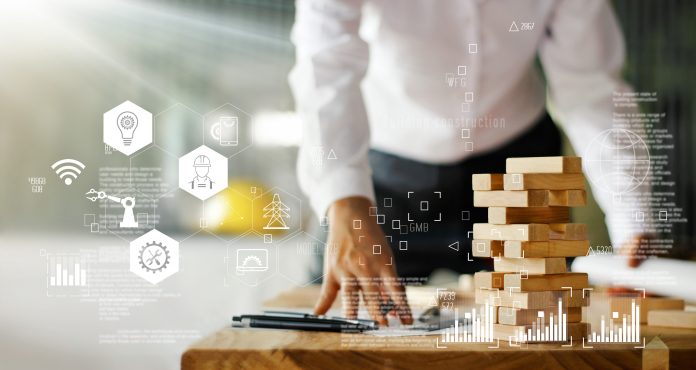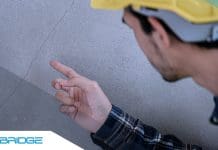Internet of Things (IoT) is everywhere these days, with people referring to how they are planning for, talking about or developing for it. With the prevalence of IoT, what does it mean for construction and property management in the healthcare space/facilities? Will it actually provide real benefits and efficiencies or is its value yet to become apparent?
With the fourth industrial revolution (Industry 4.0) in full swing, technology advances mean that new, smarter, safer and better ways have come to market to plan build and operate health assets.
The Internet of Things (IoT) is one of those technological advances that has been around for about two decades.
Since then its definition has been subject to some change, however fundamentally it refers to the connectivity to the internet of objects that generate data for the purpose of making the data available and connectable.
Although threats of cybersecurity and protection of privacy make the Internet of Things a potentially scary proposition, society is already filled with IoT objects: mobile phones, smartwatches, remote security systems, lighting in our homes, and even baby monitors all connected to the internet, demonstrating how IoT is here to stay.
What does the Internet of Things mean for construction, facilities and asset management in the healthcare space?
The promise of IoT
There is an inherent conundrum associated with IoT devices in the construction and property industry. On the one hand, manufacturers forge ahead with providing connected devices and in some cases there is no longer an unconnected alternative available.
Connected devices are touted to have great benefits for businesses in and associated with construction and property, but can stated benefits like ‘early warning’, ‘remote monitoring’ and ‘continuous data collection’ be quantified within a health organisation to the extent that they warrant change or investment?
Smart buildings and assets
A facility with devices connected can make buildings and assets ‘smart’. Critical systems and assets could be connected to the internet and if they are underperforming or even off-line, notifications could be sent to the relevant stakeholders and contractors by way of notification and work order requests with the aim of minimising disruption and optimising operational expenditure.
In most cases, it is difficult to attribute direct and immediate cost savings to internet connectivity functionality. Areas to consider for a business justification to invest in IoT devices could, for example, be to focus on risk avoidance and reduction, reduced downtime and disruption, all of which could potentially be quantified.
Data overload
Another reason why IoT devices are still sceptically regarded in construction and property is that the industry is currently experiencing a constant and ever-increasing influx of data, information and records.
The influx of data and devices that can collect more and more data is leading to data overload in the construction industry that is spending less than 1% of its value on technology. The construction and property industry may simply not know what to do with the data and how it can support productivity and efficiency gains and reduce safety incidents and risks.
There is however great potential with the advent and introduction of more IoT devices in construction and property, especially when combined with advances in artificial intelligence, machine learning and analytics.
Artificial Intelligence and machine learning
Artificial Intelligence (AI) and machine learning provide valuable insights into performance when combined with IoT devices and analytics. Machine learning and AI in simple terms is probably best explained as automating data analysis and formulating corrective courses of action.
By way of example: sensors, access systems data, room temperature, energy use are all combined to determine whether a floor is still occupied at 6:30 p.m. If not, the building management systems will be automatically directed to turn off the lights, switch off heating, ventilation and air conditioning (HVAC), switch the security system to night mode and activate the alarms.
No longer will these operating parameters be either set for predetermined times at facility commissioning or conducted through a ‘manual’ action. Now, the facility accommodates to the user needs, providing a better user experience whilst optimising energy efficiency and without compromising on security.
Combining multiple, currently or seemingly unrelated data sets will significantly increase insights in performance. For example, combining HVAC performance data with weather patterns and space occupancy might provide insights that could predict how HVAC assets perform under certain circumstances.
Through running variable scenarios, historic data could provide insights that are able to forewarn of adverse situations and even suggest suitable action to be taken when conditions manifest themselves.
Imagine if a facility could ‘learn’ to recognise the work patterns of its occupants to the extent that working hours are prolonged in the lead up to the end of the financial year and it could schedule additional kitchenette cleans to accommodate for users being in the facility longer or delay the cleaning shift so as not to disturb the users in their activities.
Technology, based on analytical insights derived from AI or machine learning, can advance assets and systems to have learned to the extent that it is able to ‘automatically’ take pre-emptive action when parameters change.
The challenges currently faced by construction and property:
Technology
Artificial Intelligence and machine learning are not yet commonly available or accessible for these industries, and many IoT devices need to mature in terms of their functionality and connectivity in order to provide useful insights or be shared across platforms and systems.
People
Digitisation, future delivery and operating models have not yet been sufficiently articulated by industry or organisations, partly because within these industries the full potential of IoT technologies is yet to have compelling articulation and operating models.
Process
Many industry processes stem from a time before digitisation and have not yet undergone wholesale change and re-visitation, i.e. processes are being enhanced and improved, however not necessarily questioned about their purpose and true functionality.
The connectivity, functionality and availability of IoT devices for the built environment including properties in the health sector are likely to continue to grow. In order for any health organisation to be able to benefit from the technology advances, IoT devices should be embraced now and data collected and structured ready for AI to use it to learn.
Call to action
Just do IoT. Connected devices are not going to go away, AI and machine learning are subject to continual advances, which means soon the technologies will connect and become available without having to incur a great expense.
In order for health organisations to be able to benefit from IoT devices and analytics it is suggested to:
Collect data
AI and machine learning will only be useful to an organisation if the technology can ‘learn’ from historic data, detect patterns and outcomes within it. Data should be collected consistently in a structured manner (Technology).
Embrace change
Inherently people and organisations are sceptical of change, yet in order for health organisations to reap the rewards from technology, IoT devices and for people to achieve fulfilment in their roles, it is critical that individuals accept change as the only constant and start to think outside the box (People).
Challenge
The status quo reflects the past; processes, regulations and work practices currently in use are based on historic events, activities and improvements. Technology provides an opportunity to redesign today’s practices, an opportunity to move away from incremental improvements to wholesale step changes. (Process)
A word of warning though, when embarking on an IoT programme, security and privacy have to be paramount. Make sure that the connected devices are secure and respect and protect privacy so as not to expose the organisation to malicious outside influences. Security must be considered from end-to-end when deploying IoT devices.
This includes endpoint security, the security of communication between endpoints, management and monitoring, data distribution and secure storage. Without security being the highest priority, any perceived economic advantages from IoT devices could be at risk of being diminished by the damage that malware attacks could do to the business.
Approach technology advances with an open mind with security front and centre. Always look for capability improvements that could be achieved by enabling organisations to improve productivity, safety records, user/staff/client satisfaction to exceed current performance standards and change the way the business is being delivered. Work practices standardisation and governance is an essential element of successfully achieving improvements.
Consideration can be given to the amount and type of data to collect on a construction project or in operating a facility that can be used to make sure that systems and processes are set up to capitalise on data captured. This allows businesses the flexibility to quickly embrace IoT where it will realise measurable benefits in construction and operation.

Rogier Roelvink
Customer strategy director
Oracle Construction and Engineering














